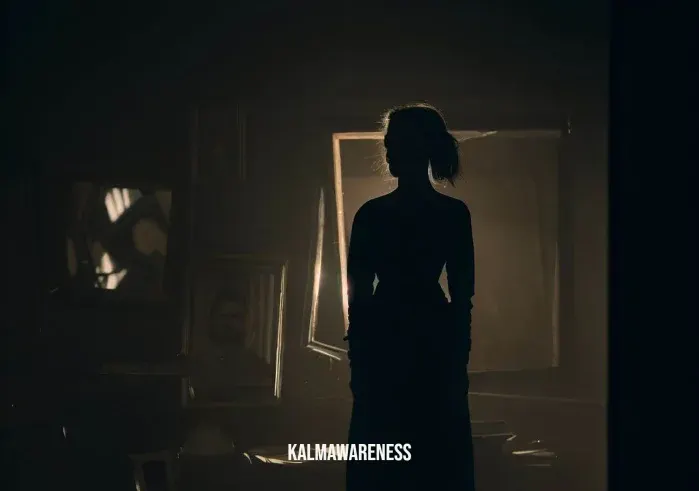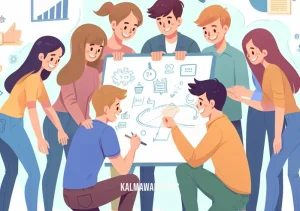When I Look in the Mirror, I Don’t Recognize Myself
Reflection and Recognition
Has it ever happened to you that you stare at your reflection in the mirror and the person staring back feels like a stranger? Have you ever had the alarming experience where, upon uttering the phrase “when I look in the mirror, I don’t recognize myself,” it suddenly dawns on you that you’re serious?
You’re not alone. Many individuals go through this intriguing and often confusing phase of self-discovery and perception. This unfamiliar reflection is not about physical change but rather is connected to our mental and emotional state.
“Seeing someone else in the mirror is a manifestation of your subconsciousness telling you that you are going through an internal change.”
As we navigate through different phases in life, our experiences, influences, and the people around us shape our identity and self-perception. Consequently, the reflection in the mirror becomes a canvas where we project our innermost feelings and thoughts.
For some people, these changes may result in feelings of disconnection from their sense of self. They may begin to feel that they are not themselves. This can be a challenging experience, but it is also a valuable opportunity for introspection and personal growth.
In this journey towards rediscovering your identity, the feeling of unfamiliarity with oneself is not something to be feared. It is simply an indication that you are evolving and growing. As you embark on this journey, you need to remember that you are not your pain. Your experiences, whether they are painful or joyous, are just part of your journey.
The Role of the Ego
Another significant aspect that shapes our self-perception is the Ego. According to psychoanalytic theory, the Ego is the part of the mind that mediates between the conscious and the unconscious. It’s responsible for reality testing and a sense of personal identity.
While the Ego plays a crucial role in our psyche, it’s essential to understand that we are not our Ego. Our true self lies beyond it. Our real identity is much more profound than the labels, roles, or societal expectations that we often identify with.
As we continue to evolve and change, our Ego may struggle to keep up, leading to a sense of disconnection from our self-image. This could result in situations where we ask, “Can you not be yourself for 5 minutes?”
In the next part of the article, we will delve deeper into how we can use these moments of disconnection to foster self-growth, cultivate gratitude, and harness the power of our inner child for healing. This journey may not be easy, but remember that each day is a new beginning, and it’s never too late to embark on the path of self-discovery and self-love.
Please continue to Chapter 2: The Journey Towards Self-Growth and Gratitude to uncover the potential these moments of unfamiliarity hold for our personal development.

The Journey Towards Self-Growth and Gratitude
Upon uttering the words “when I look in the mirror, I don’t recognize myself,” you’re embarking on a profound journey. This journey, while it can be perplexing at first, is packed with immense potential for personal growth and self-discovery.
The unfamiliarity we encounter in the mirror can often be a signal that we’re evolving or changing internally. We may not see it initially, but with patience, introspection, and self-love, we can transform these instances into opportunities for growth. There are several strategies we can adopt to foster this growth:
- Embrace Change: Change is the only constant in life. It’s essential to understand that being something you’re not is a part of our evolving identity. Try to embrace change and see it as an opportunity rather than a threat.
- Practice Mindfulness: Incorporating mindfulness practices such as I am that I am meditation can help us better understand our thoughts and emotions.
- Cultivate Gratitude: Developing a habit of gratitude can significantly shift our perspective and foster a positive self-image.
- Let Go of the Past: Holding onto the past can cloud our present and future. It’s crucial to let go of the past and letting go of the past books can provide some insights on how to achieve this.
- Be Patient with Yourself: Remember, self-growth is a journey, not a destination. Your patience with this process can significantly impact the outcome.
Gratitude, in particular, plays a crucial role in shifting our self-perception. It reminds us of the things we have and the aspects of ourselves that we appreciate, thereby providing a positive counterbalance to the unfamiliarity we may experience with our self-image.
A simple gratitude exercise is the gratitude method shifting. This method involves consciously shifting your focus from negative thoughts or feelings to feelings of gratitude. You can begin with being grateful for the simplest things like having a place to live or being able to enjoy a warm cup of coffee in the morning.
Cultivating gratitude at the workplace can also contribute to a positive self-image and overall mental wellbeing. To help with that, here’s a table illustrating some of the things to be grateful for at work:
| Aspects to Be Grateful For | Benefits | |
|---|---|---|
| 1. | Supportive Colleagues | Promotes a sense of belonging |
| 2. | Constructive Feedback | Encourages personal growth |
| 3. | Opportunities for Learning | Broadens skills and knowledge |
| 4. | Work-Life Balance | Enhances overall wellbeing |
| 5. | Recognition of Efforts | Boosts self-esteem and motivation |
As we continue our journey into the world of self-perception and recognition, we’ll next delve into the role of self-compassion, exploring our core values, and understanding the power of solitude. Stay tuned for Chapter 3: Exploring Self-Compassion, Core Values, and Solitude.
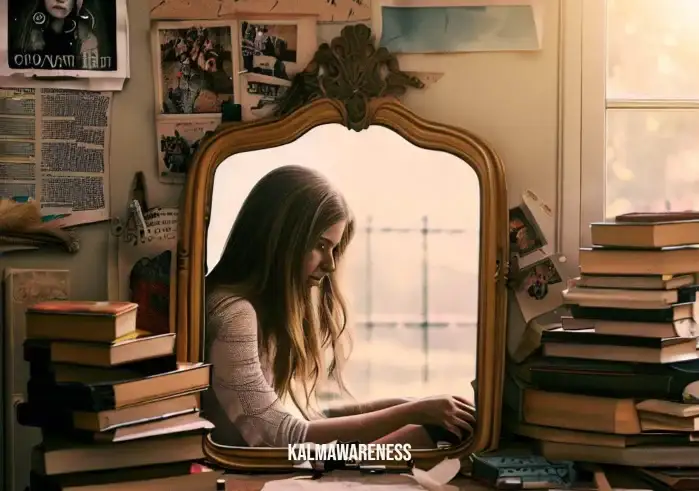
Exploring Self-Compassion, Core Values, and Solitude
As we dive further into the quest of “when I look in the mirror, I don’t recognize myself,” we find ourselves at the junction of self-compassion, core values, and the power of solitude. Each aspect offers its unique insight into our journey of self-discovery and identity formation.
Self-Compassion: When we find ourselves confronting a reflection in the mirror that seems unfamiliar, it’s crucial to approach the situation with self-compassion. In the wise words of Brene Brown, “Talk to yourself like you would to someone you love.” Self-compassion journal prompts can be a powerful tool to foster kindness towards ourselves, even when we feel disconnected from our reflection. As we shift from self-judgment to self-compassion, our relationship with our mirror image can transform positively.
Core Values: Our core values are integral to our identity. However, as we evolve and change, our values may shift, leading to a sense of unfamiliarity when we gaze into the mirror. Brene Brown, a renowned research professor, emphasizes, “If we want to fully show up, to be the most authentic versions of ourselves, we have to be clear about our intentions, our values.” Diving deep into Brene Brown’s list of values, and Brene Brown’s value list can be a stepping stone towards understanding our evolving identity.
Power of Solitude: “Solitude is the school of genius,” said Edward Gibbon. And indeed, solitude provides an opportunity to pause, reflect, and understand our evolving self, especially during times when we feel disconnected from our reflection. By harnessing the power of solitude, we can create the space necessary to understand why we may feel estranged from our mirror image.
As we explore the intersection of self-compassion, core values, and solitude, we encounter a critical concept – self-awareness. Self-awareness allows us to become more in tune with our thoughts, feelings, and actions. This increased awareness can lead us to understand the root of our feeling of disconnect from our reflection and guide us towards reconciliation with our evolving identity.
“Everything that irritates us about others can lead us to an understanding of ourselves.” – Carl Jung
In this context, the irritant is the unfamiliarity we face when looking in the mirror. By directing our attention towards understanding this discomfort, we can gain a deeper understanding of our evolving selves.
Remember, the journey of self-discovery is a marathon, not a sprint. It’s important to give ourselves time to process these changes, be patient with ourselves, and above all, be kind. As American author and motivational speaker Leo Buscaglia once said, “You are the only you… You are the best you. You will always be the second-best anyone else.”
Our journey continues in Chapter 4, where we will delve into the science of self-perception and discuss practical strategies to foster a positive self-image. We invite you to continue reading Chapter 4: Unveiling the Science of Self-Perception.
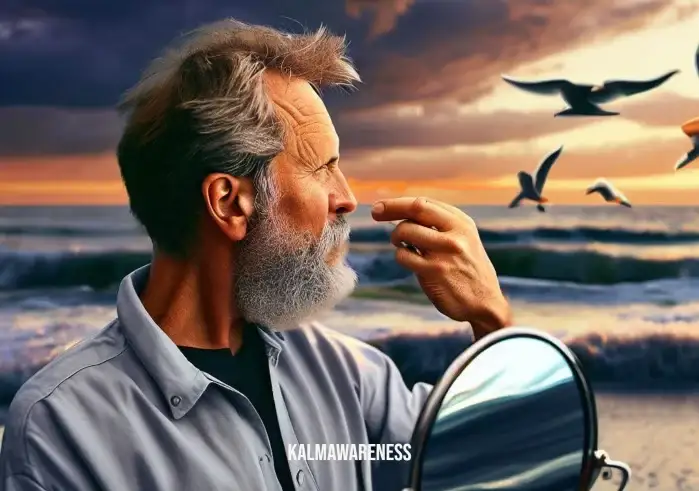
Unveiling the Science of Self-Perception and Fostering a Positive Self-Image
In the previous chapters, we delved into the maze of personal identity and self-perception when one confronts the statement, “when I look in the mirror, I don’t recognize myself”. Our exploration continues as we delve deeper into the science of self-perception and discuss strategies to foster a positive self-image.
The Science of Self-Perception
Self-perception is the reflection of our internal state in our external appearance. However, the human brain perceives self-image and reflection in an intriguing manner. Have you ever asked yourself, “do we look like what we see in the mirror?” This cognitive dissonance between what we see and what we feel can often lead to a sense of unfamiliarity or alienation from our mirror image.
Fostering a Positive Self-Image
Having a positive self-image is essential for overall wellbeing. When the mirror doesn’t reflect the image we expect, it can be disorienting, leading to negative emotions. Here, we offer a few strategies to foster a positive self-image.
Practice Self-Reflection
One way to reconcile the disconnect between the perceived and actual self is through self-reflection. Mirror activities can serve as tools for self-reflection, providing us with a moment to understand our feelings better. Taking a few moments to pause and look deeply into the mirror can help us recognize the stranger looking back at us.
Gratitude and Perspective Shift
Gratitude can be a transformative emotion that shifts our perspective towards positivity. By practicing gratitude counseling lessons and participating in gratitude experiments, we can learn to appreciate our evolution and change the narrative from “I don’t recognize myself” to “I am learning to understand my new self”.
Grounding in the Present
Grounding ourselves in the present moment can help deal with the discomfort of not recognizing our reflection. By taking a practice pause, we allow ourselves to experience the current moment fully, aiding in processing our changing self-image.
It is also valuable to remember that this experience, while unsettling, is not uncommon. Many have navigated through this journey before. The table below provides a glimpse of some inspiring quotes from such individuals, offering hope and confidence.
| Author | Quote | Source |
|---|---|---|
| James Lane Allen | “Adversity does not build character, it reveals it.” | Mistakes Grow Your Brain |
| Carl Rogers | “The only person who is educated is the one who has learned how to learn and change.” | Switch On Your Brain 5-Step Learning Process |
| Iyanla Vanzant | “When you stand and share your story in an empowering way, your story will heal you and your story will heal somebody else.” | A Deep Seated Sense of Meaning and Purpose in Life |
| Buddha | “You, yourself, as much as anybody in the entire universe, deserve your love and affection.” | You Are Not Your Pain |
| Elizabeth Gilbert | “Embrace the glorious mess that you are.” | Imperfectable |
Our exploration of “when I look in the mirror, I don’t recognize myself” concludes in the next chapter. We invite you to continue to Chapter 5: Embracing Change and Understanding the Path Forward, where we integrate all the insights gained so far and chart the way forward.
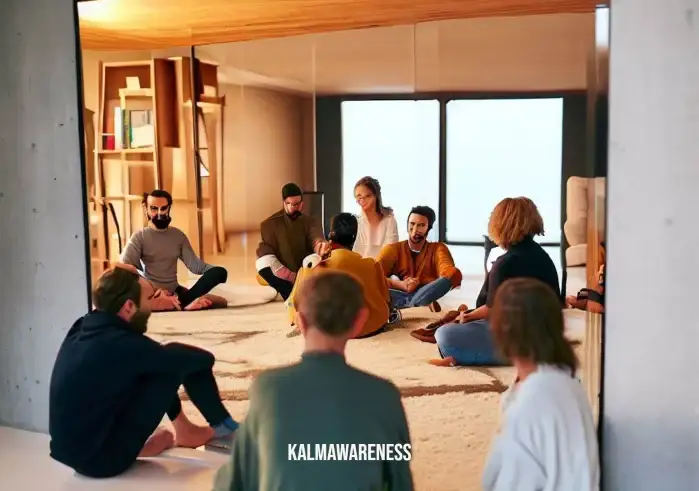
Embracing Change and Understanding the Path Forward
As we’ve journeyed through the intricacies of the statement, “when I look in the mirror, I don’t recognize myself”, we’ve come to understand that it’s not an alarming anomaly, but rather a manifestation of our continually evolving selves. In this final chapter, we will address how to embrace change and comprehend the path forward.
The first step in reconciling our perception is realizing that being something you’re not is a needless strain. Authenticity is pivotal in connecting with our true selves. Our internal monologue, how we perceive ourselves, plays a significant role in how we approach our reflections.
Consider, for instance, the story of a man who didn’t recognize himself when he woke up one morning. Unsettling as it was, he realized it wasn’t about the physical self staring back from the mirror, but the perception of his self that had shifted.
At the heart of this, we find the necessity of self-awareness. By fostering self-awareness, we can untangle the web of thoughts and perceptions that prevent us from recognizing ourselves. This may involve various strategies, including journaling, where self-compassion journal prompts can play a transformative role.
Another crucial aspect is understanding the power of solitude. As we become comfortable with our company, the unfamiliar face in the mirror begins to take a familiar shape. This process of self-discovery and reconciliation is not instant; patience is key, and as Rumi profoundly said, “what your patience may gradually do is quietly effective.”
To further facilitate understanding, the following table breaks down the steps involved in embracing change and understanding the path forward:
| Step | Description | Beneficial Practice |
|---|---|---|
| 1. Recognizing the Change | Become aware of the unfamiliarity when you look in the mirror | Take a moment to think about flexibility, love, and trust |
| 2. Embrace Authenticity | Accept the natural progression of change and resist the urge to be something you’re not | Brene Brown Core Values |
| 3. Cultivate Self-Awareness | Become cognizant of your thoughts and feelings | Self-awareness icon |
| 4. Practice Self-Compassion | Develop a kind attitude towards yourself | Self-compassion journal prompts |
| 5. Exercise Patience | Understand that self-reconciliation takes time | What your patience may gradually do |
This concluding chapter imparts hope. The next time you feel, “when I look in the mirror, I don’t recognize myself”, remember it’s a journey of self-discovery. Be patient, compassionate, and embrace the evolution. After all, as Brene Brown’s list of values reminds us, authenticity and self-compassion are at the core of self-love and acceptance.
This journey of self-perception, self-identity, reflection, and disconnection ends here, but your personal exploration continues. Hold the mirror, gaze at your reflection, and remember: You are continually evolving. You are beautifully imperfect. You are you.
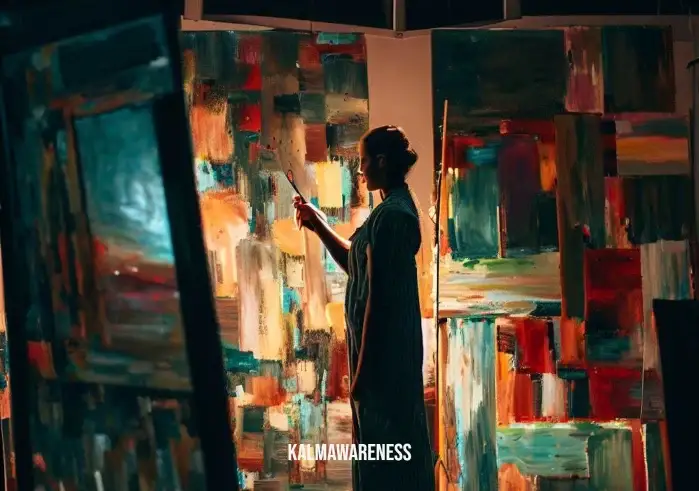
Embracing Your Mirror Image: The Final Reflection
“When I look in the mirror, I don’t recognize myself.” This sentiment, so profound and universal, has guided us through the labyrinth of self-perception, identity, and acceptance. Now, in our final chapter, we shall reflect upon this journey and guide you towards a path of self-appreciation and acceptance, with a newfound vision for your mirror image.
The mirror is not our enemy. It merely reflects who we are, literally and figuratively. Sometimes, the problem lies not within the reflection but within our perception of it. We tend to scrutinize our image, focusing on the flaws more than the strengths. Instead of harsh criticism, we should practice compassion, for as Buddha once said, “You yourself, as much as anybody in the entire universe, deserve your love and affection.”
Change is inevitable. Our bodies and minds are in a constant state of flux. The same applies to our mirror image. If you feel detached from it, remember that it’s not a sign of crisis but an indication of transformation. Embrace it and acknowledge that change is as natural as the setting sun and the changing seasons.
Remember, we are not static entities. Just as a river alters its course over time, we too evolve and transform. Do not fear the transformation, rather celebrate it. As Rumi beautifully penned, “Yesterday I was clever, so I wanted to change the world. Today I am wise, so I am changing myself.”
Our journey has taken us through a series of enlightening revelations, from the importance of self-acceptance to the necessity of self-compassion. We’ve dived into introspection, navigated our self-perception, and emerged enlightened about the significance of change. Now, let’s return to the mirror with newfound understanding and acceptance.
As we close this chapter, remember: the mirror image is not just a reflection; it’s a narrative of your journey. Every line, every wrinkle, every change tells a tale of experiences lived, challenges overcome, and triumphs celebrated.
As we conclude our journey, we invite you to explore the diverse topics covered in our other magazines. Whether you’re interested in delving deeper into self-discovery, exploring mindfulness, or venturing into the world of emotional intelligence, we have a wealth of wisdom awaiting you.
Never forget that change is a part of life. Embrace your transformation with a smile, for every stage of life is beautiful and unique in its own way. And most importantly, be gentle with your reflection, for it’s the embodiment of your resilience, strength, and growth. Remember, when you look in the mirror, you’re looking at someone deserving of the utmost respect, love, and admiration – you.
Until we meet again, remember to gaze upon your reflection not with self-doubt, but with self-love. Look in the mirror, recognize the ever-evolving you, and greet the person staring back with a smile of acceptance. For every change is a step towards a newer, better, and stronger self. So, here’s to change, growth, and the strength to embrace both!
